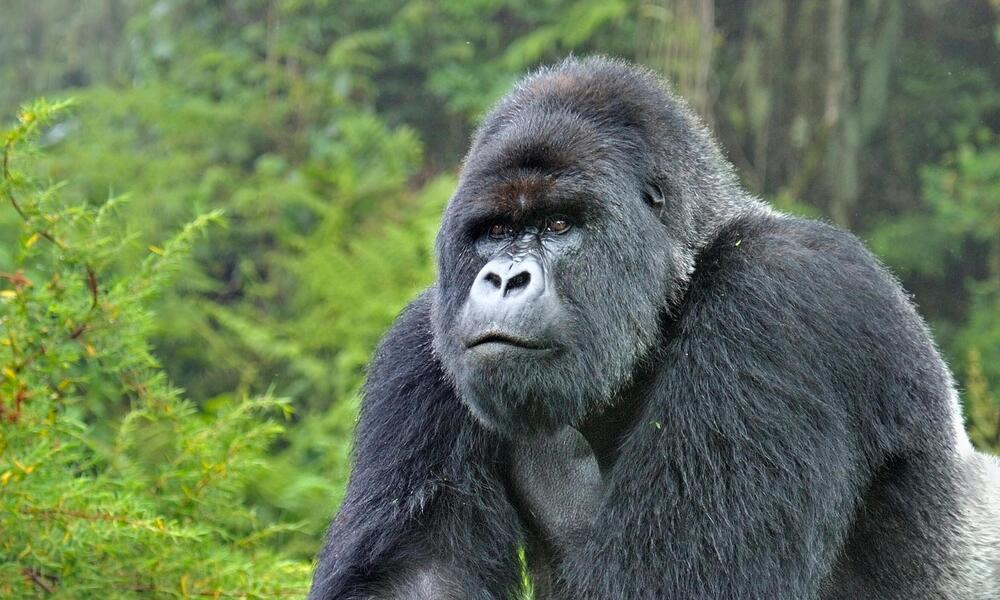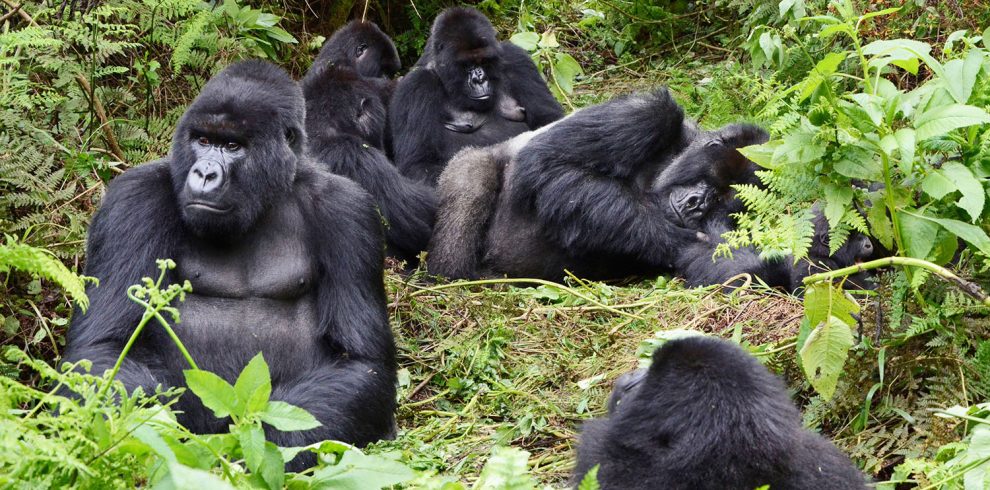Gorilla Trekking vs Gorilla Habituation Experience
Seeing the endangered mountain gorillas in the wild can be a thrilling, moving and life-changing experience that no primate lover needs to miss during an African safari. Gorilla Habituation is the process of training the Giant Apes to make them accustomed to human presence, and it usually takes about 2-3 years. This is when Rangers, researchers, conservationists, and trackers visit a gorilla family on a daily basis to observe behavior of individuals in the family, and even name them. Before visitors are eventually introduced to the mountain gorillas, a mock exercise is done and on passing it, the gorilla family is opened for trekking by visitors.
Gorilla trekking therefore involves visiting a gorilla family that is fully-habituated and now used to human presence, hence won’t run on seeing visitors. Gorilla Trekking and the Habituation Experience are two thrilling activities that introduce primate enthusiasts, nature lovers, and adventure seekers to the endangered mountain gorillas in their natural habitats. However, do you know the difference between these two incredible experiences? In this blog, we provide all the information you need to know about how different they are- duration of tracking and time spent with Giant Apes, prices of permits, where the activities are done, and other details that will assist you in planning your adventure of a lifetime.

Mountain Gorilla
While Gorilla trekking and the Habituation Experience both provide the opportunity to get up close and personal with the Giant Apes, there are a number of ways these two activities differ from each other and they include;
Where the activities are done
Mountain Gorilla Trekking is undertaken in all the four National Parks where these Giant Apes are found- Bwindi Impenetrable and Mgahinga Gorilla National Parks in southwestern Uganda, Volcanoes National Park in Northwestern Uganda, and Virunga National Park in the Eastern side of the Democratic Republic of Congo. There are combined 40 habituated gorilla families in all these places (20 in Uganda, 12 in Rwanda, and 8 in DRC).
The Gorilla Habituation Experience is done in only one place- Bwindi Impenetrable National Park and it isn’t done in all the four trekking sectors/regions but Rushaga sector in the south of the Protected Area. Thanks to the fact that the experience is enjoyed in Rushaga, the adventure is even perfect for visitors traveling from Kigali.
Time spent with the mountain gorillas
Another interesting way gorilla trekking is different from the Habituation Experience is from the time visitors spend with the Giant Apes. While the process of searching for the mountain gorillas will most likely be the same for these two activities, visitors get to spend only one hour during gorilla trekking. This usually feels like 15 minutes for most photographers and if you wish to spend more time, the Gorilla Habituation Experience is the perfect adventure.
The maximum time spent with the endangered mountain gorillas during the Gorilla Habituation Experience is four hours, which is more than enough time for photography and learn more about the Giant Apes.
Number of participants
The maximum number of visitors who can track a habituated gorilla family is 8 persons each day. In so doing, only 8 gorilla permits will be issued each day for every family. The Gorilla Habituation Experience is more intimate, in that only four visitors can visit each Gorilla
Family. The fact that only four permits are issued each day means it is more challenging to secure the permits, especially during the high season (July, August, September, and December).
Cost of gorilla permits

Mountain Gorillas in Congo
Gorilla trekking and the Gorilla Habituation Experience are different, in terms of Gorilla permit costs. Gorilla trekking is undeniably cheaper whereby permits cost $450 per person in the Democratic Republic of Congo, $700 per person in Uganda, and $1500 per person in Rwanda.
Gorilla Habituation Experience, which is only done in Uganda, costs $1500 per person for Gorilla permits. This price is worthwhile, considering the amount of time visitors get to spend with the Giant Apes.
Best time to undertake Gorilla Trekking and the Gorilla Habituation Experience
The mountain gorilla natural habitats (typically high altitude and forested) are marked by two seasons- two dry and two wet, yet in reality are almost humid and wet all year round. The best time to visit these National Parks (for gorilla treks and the Habituation Experience) is normally during the drier months of June to September and December to February. There are fewer daily showers and the forest trails allow trekkers to gain access to the gorilla family (which is only done on foot). The opposite is definitely true during the wet season (March to May and October to November) when rainfall levels increase in the mountain gorilla natural habitats hence making forest trails muddy, slippery, and literally difficult to navigate.
